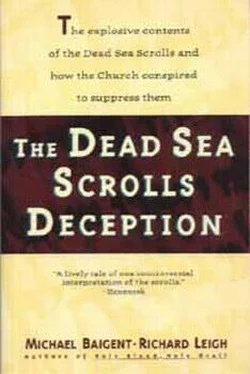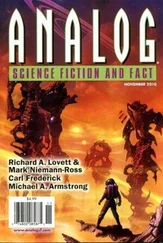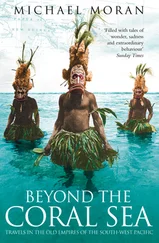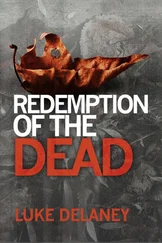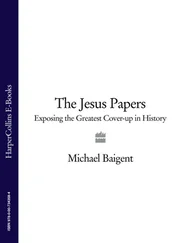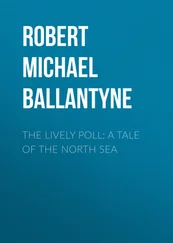Some on the committee might be tempted to charge the Cincinnati scholars with piracy. On the contrary, Mr. Wacholder and Mr. Abegg are to be applauded for their work — and for sifting through layer upon layer of obfuscation. The committee, with its obsessive secrecy and cloak-and-dagger scholarship, long ago exhausted its credibility with scholars and laymen alike. The two Cincinnatians seem to know what the scroll committee forgot: that the scrolls and what they say about the common roots of Christianity and Rabbinic Judaism belong to civilisation, not to a few sequestered professors.
A more electrifying revelation was soon to follow. On 22 September, the Huntingdon Library in California disclosed that it possessed a complete set of photographs of all unpublished scroll material. These had been entrusted to the library by Betty Bechtel of the Bechtel Corporation, who had commissioned them around 1961. Having learned of the photographs’ existence, members of the international team had demanded them back. The Huntingdon had responded with defiance. Not only did the library make its possession of the photographs public but it also announced its intention of making them accessible to any scholar who wished to see them. Microfilm copies were to be offered for as little as ten dollars. ‘When you free the scrolls,’ said William A. Moffett, the library’s director, ‘you free the scholars.’
Again, of course, members of the international team kicked up a rumpus, this time more petulant than before. Again, there were charges of ‘theft of scholarly work’. One independent professor replied, however, that most people ‘… will regard [the Hunting-ton] as Robin Hoods, stealing from the academically privileged to give to those hungry for… knowledge.’
Amir Drori, head of the Israeli Antiquities Authority, accused the Huntington of sundry legal transgressions — even though the photographs had been taken long before the scrolls passed into Israeli hands as spoils of war. Magen Broshi, director of the Shrine of the Book, spoke darkly of legal action. The Huntington stood its ground. ‘There’s either freedom of access or not. Our position is that there should be unfettered access.’ By that time, release of the photographs was already a fait accompli, and any attempt to reverse the process would have been futile. ‘It’s too late,’ the Huntington declared. ‘It’s done.’
On 25 September, the Israeli government gave way, carefully distancing itself from Drori’s and Broshi’s pronouncements. Drori and Broshi were said to have been ‘speaking as individuals, not as representatives of the Israeli government.’ Yuvel Ne’eman, Israel’s Minister of Science, issued a press statement asserting that
…every scholar should be granted free access to examine the scrolls and publish his findings. It is fortunate that this opportunity has now become feasible through public exposure of the scrolls’ photographic collection by the Huntington Library.
In the meantime, at 11:05 that morning, Robert Eisenman’s name had gone down on record as that of the first scholar formally to request and obtain access to the Huntingdon’s photographs of scroll material. The battle for access had been won. There still remains, however, the process of dismantling the ‘orthodoxy of interpretation’ promulgated for the last forty years by the international team.
By the time the events chronicled above had hit the headlines, Eisenman had begun to pursue his research on other fronts as well. In 1988, he had pointed out that the excavations at Qumran were far from complete, far from exhaustive. The surrounding terrain is, in fact, ideal for the preservation of manuscripts, and virtually all experts in the field agree that there are more discoveries to be made. It is not just possible, but probable, that additional scroll material still exists, buried under landslides and rock-falls. Many caves have yet to be excavated properly — that is, through the rubble of fallen roofs and down to bed-rock. Other caves, previously explored only by the Bedouin, have to be explored anew, since the Bedouin tended to overlook some concealed documents and to leave behind many fragments; and, in any case, officially sanctioned Bedouin excavations effectively ceased with the 1967 war. There are other sites in the general vicinity of Qumran that have yet to be thoroughly explored. Nine miles to the south, for example, on the shores of the Dead Sea, at a place called En el-Ghuweir, an Israeli archaeologist found Qumran-style graves and the ruins of a Qumran-style (albeit smaller) residence. 1It is certainly reasonable to suppose that the caves in the nearby wadis, hitherto unexcavated, may also be repositories for scrolls.
With these facts in mind, Eisenman determined to embark on his own archaeological explorations. His primary objective was, of course, to look for additional scroll material. Such material might — as proved to be the case with the ‘Temple Scroll’ — be entirely new. But even if it duplicated material already in the hands of the international team, it would render pointless any continued suppression. Quite apart from the prospect of additional scroll material, however, Eisenman wanted to build up as complete a picture as possible of the population in the entire region, from Qumran on south towards Masada. There might have been, he concluded, other Qumran-style communities. In consequence, he undertook to look for evidence of any other kind — evidence of water control, for example, such as terraces, aqueducts and cisterns, which might have been constructed to sustain livestock and support agriculture.
To date, Michael Baigent has accompanied Robert Eisenman and his team of archaeologists and volunteers on two exploratory expeditions, in January 1989 and in January 1990. In the first of them, they concentrated on the excavation of a cave roughly a mile south of Qumran, some 500 feet up the cliff. The cave opened into a series of chambers extending at least eighty feet back into the rock. Part of the interior had a smooth floor made of palm fronds and packed mud. No scrolls came to light, but a number of Iron Age remains were found — a juglet, an oil lamp, and, uniquely, an arrow shaft and arrowhead in perfect preservation after 3,000 years. The expedition proved, for the first time, that some at least of the caves around Qumran had been inhabited — not just used as temporary refuges during brief periods of danger, but occupied on a more permanent basis.
The second expedition endeavoured to explore as much as possible of the Dead Sea coast south of Qumran and the adjacent cliff-face. The purpose of this undertaking was to compile an inventory of all hitherto unexplored caves that might warrant subsequent exhaustive excavation. Dividing itself into small teams, the expedition searched some thirteen miles of cliff, rising precipitously as high as 1,200 feet. Apart from caves, there were found the remains of artificial terraces and walls, of constructions for water control and irrigation — all attesting to human inhabitation and cultivation. Altogether, 137 habitable caves were located and subjected to preliminary examination without excavation. Of these, 83 were deemed worthy of systematic excavation: they will become the focus of future archaeological activity.
Of particular and revolutionary importance to any such activity will be a new system of ‘high-tech’ ground radar known as ‘Subsurface Interface Radar’ (SIR). We had been discussing with Eisenman the likelihood of there being other caves in the vicinity of Qumran and along the shore of the Dead Sea, as well as of caves, rooms, cellars, passages and/or other subterranean structures under the ruins of Qumran itself. De Vaux, the only person to attempt any excavation of the actual site, never looked for anything of the sort, never really probed beneath the surface. Yet it is virtually unknown for a construction of the kind attested to by the Qumran ruins not to have underground chambers, passages, dungeons or escape tunnels. It is generally acknowledged that something of the sort must indeed exist. But some fairly major excavations would be necessary, involving much trial and error and probably damage to the site.
Читать дальше
